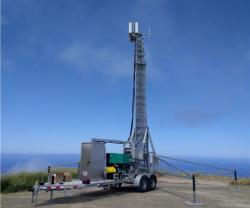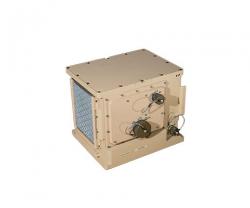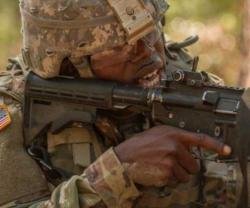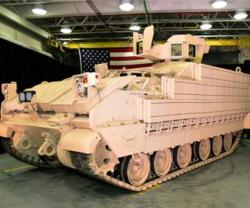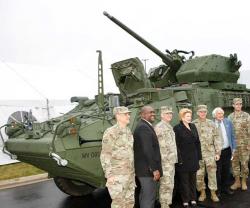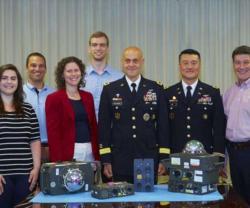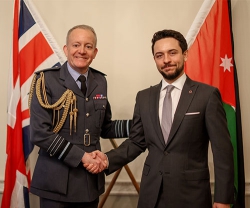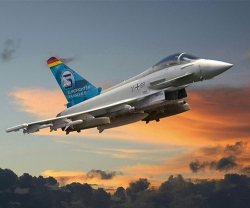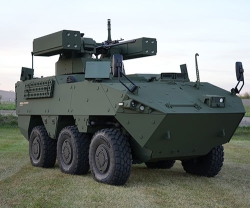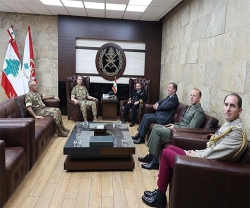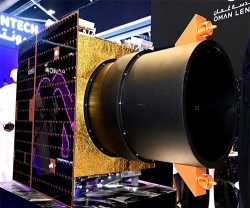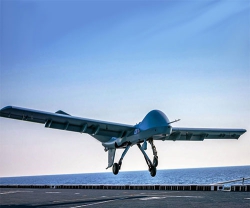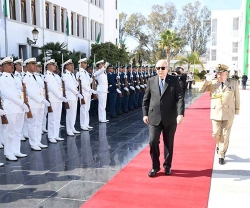Harris Corporation (NYSE: HRS), an international communications and information technology company, has received a contract update from Lockheed Martin to continue development work on wireless networking technology under Increment 3 of the Warfighter Information Network-Tactical (WIN-T) program. Harris successfully completed recent major testing and evaluation milestones on the U.S. Army's WIN-T program and is continuing work on the next generation of military tactical communications systems.
Harris is a member of the WIN-T team led by General Dynamics and Lockheed Martin.
WIN-T Increment 3 significantly extends the capabilities of the current Increment 2 Line-Of-Sight (LOS) wireless networking technology. Harris is responsible for key LOS radio system components for Increment 3 that, once awarded, will extend the scope of the Harris work on WIN-T and bring the company's total award value to more than $130 million from 2007 to 2012. The follow-on production program is expected to include hundreds of systems per year between 2012 and 2021.
"Harris has been on the Lockheed Martin WIN-T team since 2002 and continues to be a valued and critical team member on both Increment 2 and Increment 3," stated Amy Krause, Lockheed Martin WIN-T Portfolio Manager. "LM looks forward to continuing to work with Harris in support of WIN-T new business in 2009 and beyond." Under the continuing Increment 3 contract, Harris will complete development, test and qualification of the Highband Digital Transceiver (HDT) modem hardware and multiple variants of the Highband RF Unit (HRFU) antenna.
"Increment 3 will demonstrate more of the potential power and unique capabilities of the Highband Networking Waveform for the Army's WIN-T platform," said Wes Covell, president of Defense Programs for Harris Government Communications Systems. "By implementing more advanced processing capabilities and enhanced antenna technology, this new system delivers twice the throughput and provides greater range performance compared to Increment 2, in order to broaden the Army's full range of secure, mobile networking requirements as it continues its transition to a network-centric fighting force."
Harris successfully completed the Development Test (DT) and Engineering Field Test (EFT) with General Dynamics, Lockheed Martin and the WIN-T program office using the Highband Networking Radio(TM) (HNR) at Fort Huachuca, in preparation for an Increment 2 Limited User Test (LUT) event which was recently executed at Fort Stewart and Fort Lewis. This is a major milestone in the WIN-T Increment 2 program, which precedes Increment 3 in the successive technology deployment strategy of the WIN-T program. An order for Low Rate Initial Production (LRIP) using the HNR is projected to be placed by WIN-T later this year. Co-developed by Harris and BAE Systems, the HNR hosts the Harris-developed Highband Networking Waveform(TM), which implements robust, agile, full-mesh, ad hoc networks for terrestrial and airborne applications. An advanced version of the Highband Networking Waveform will run on Increment 3 hardware platforms.
The Highband Networking Waveform enables selection of the best communications path, and creates a self-forming, self-healing network where nodes can enter and exit without need for fixed network infrastructure or operator intervention. The network is adaptive and distributed, requiring no central node to control it. Increment 3 will take greater advantage of the potential capability of the Highband Networking Waveform compared with Increment 2.
Achieving burst rates of up to 54 Mbps, the HNR integrates directive-beam technology with mobile, ad hoc mesh networking. The HNR has been implemented on a variety of terrestrial mobile and fixed-wing, rotary-wing, and airship platforms, including piloted aircraft and Unmanned Aircraft Systems. Applications of the Highband Networking Waveform and the HNR extend to a variety of scenarios, including terrestrial tactical communications augmented by air-to-ground and air-to-air nodes, as well as air-and-missile defense missions. These technologies also can be used to extend the battlespace network into the maritime force contingent, connecting expeditionary forces, near-shore support and blue-water platforms. WIN-T Increment 3 will deliver significantly more powerful networking to the warfighter when it begins deployment, currently planned for 2013.
Harris Defense Programs develops, supplies, and integrates communications and information processing products, systems, and networks for a diverse base of aerospace, terrestrial and maritime applications supporting U.S. Department of Defense missions. Harris is committed to delivering leading-edge technologies that support the military's ongoing transformation to network-centric communications.


